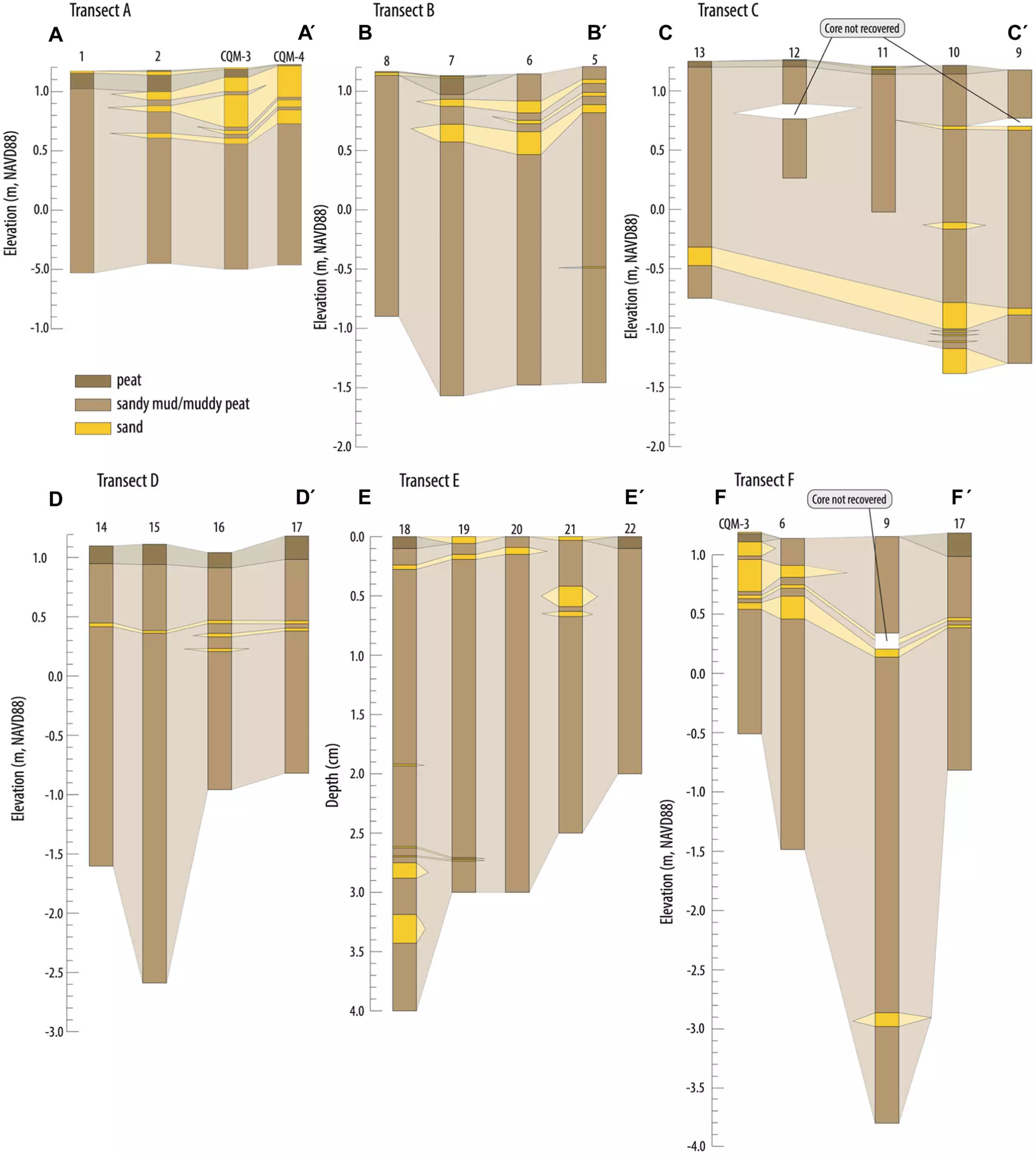In an era where climate change is reshaping our understanding of environmental risks, a recent breakthrough by a Rutgers University-New Brunswick-led research team promises to change the way we perceive historical and future hurricane frequencies. By employing innovative sediment analysis techniques to detect evidence of catastrophic storms dating back over 400 years, the study published in the Journal of Quaternary Science offers insights that extend well beyond the typically accessible historical records. This groundbreaking approach provides a valuable perspective on the potential evolution of storm patterns in a changing climate.
The implications of this research are vital; they suggest a unique and much-needed avenue for understanding the mechanisms behind extreme weather events that communities have faced throughout history. Kristen Joyse, the principal investigator of this research, highlights how geological sediment—specifically, overwash deposits formed during hurricanes—can furnish us with a rich historical narrative on storm activity, thus offering a new lens through which to assess future risks.
Deciphering Sediments: A Window to the Past
The core of the research revolved around examining sediment layers in New Jersey’s Cheesequake State Park wetlands, revealing eight distinct storm deposits, including one particularly significant deposit dating back to 1584—well before any instrumental records existed. This stark differentiation between past and present underscores the limitations of relying solely on tidal gauges or historical anecdotes, which are often muddled by gaps and inconsistencies. Instead, the Rutgers team’s analysis renders a more nuanced understanding of how hurricanes have impacted this region over centuries.
What’s particularly intriguing about this research is how it successfully integrates various scientific disciplines, including geology, oceanography, and climate science. By employing modern dating techniques like radiocarbon dating of organic materials and analyzing microfossil content, researchers precisely broke down sediment composition. This blend of data not only illuminates the past but also contextualizes the sedimentary evidence within broader climate narratives, enriching our understanding of how storms and environments influence one another over centuries.
Revisiting Hurricane Narratives and Atmospheric Implications
As the research team explored the sediment cores, they identified numerous historical hurricanes, including those from 1938, 1788, and even the pre-instrumental storm so early as 1584. Their findings challenge the prevailing narrative that climate histories are best understood through a linear lens of documented instrumental records. Instead, they emphasize the importance of sedimentary evidence in framing a more comprehensive picture of atmospheric patterns and storm frequencies.
Interestingly, while synthesizing the sediment samples with data from long-established tidal gauges in the New York area—some of which have been operational for nearly a century—the researchers revealed gaps where extreme water level events were recorded but not reflected in sediment layers. According to Robert Kopp, a co-author of the study, acknowledging the omissions in this sedimentary record is essential for validating their findings while also refining our understanding of hurricane impacts.
In this context, storms that have been preserved in sediment records could represent critical data points that inform future planning and preparedness. It becomes increasingly clear that understanding both the preserved sediment layers and their associated climate events is crucial for municipalities aiming to mitigate risks and adapt to the evolving realities of climate change.
Unsolved Mysteries and Future Research Directions
Despite the significant achievements outlined in the study, the researchers remain acutely aware of the unanswered questions that linger. For example, Joyse hints at intriguing anomalies—why do certain storms leave behind lasting sediment records while others do not? What factors influence the preservation potential of storm deposits? These conundrums open avenues for further exploration and hypothesizing that lean on an interdisciplinary approach, merging historical inquiry with geosciences and environmental policy.
Joyse’s transition from academia to an environmental consulting role in Australia underscores the societal impact of this research. By deploying insights gained from sediment studies, professionals can tailor climate adaptation strategies that proactively address the realities of shifting storm patterns. As communities confront the daunting climate challenges ahead, integrating findings from the past becomes vital for shaping resilient futures.
The revolutionary techniques employed by Joyse and her colleagues mark a paradigm shift in our understanding of hurricanes. Their research compels us to think critically not only about historical weather patterns but also about how they may inform the resilience strategies necessary for navigating an uncertain future. Such discoveries reinforce the importance of documenting and analyzing geological records, giving us the tools to both break new ground in restoration efforts and foster a deeper appreciation for the power of nature over time.

